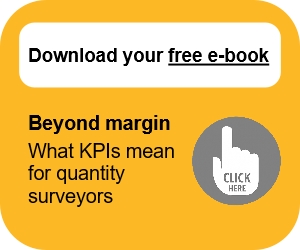Cost Value Reconciliations (CVR)
Cost Value Reconciliation (CVR) is a crucial financial management tool used to monitor and control project finances. It involves comparing the actual costs incurred on a construction project with the value of work completed to date. This comparison helps ensure that projects remain financially viable and highlights any discrepancies between costs and revenue.
Actual costs incurred might include direct costs (materials, labour, subcontractor fees, and any other expenses directly related to the construction work) and indirect costs (overheads, administrative expenses, and other costs not directly tied to specific project activities.)
The value of work completed (value earned) might include work certified (the value of work that has been completed, inspected, and approved by the client or project manager) and work not yet certified (the value of work that has been completed but not yet certified).
Cost vs. value compares the costs to date (the total actual costs incurred up to a specific date) and the value to date (the total value of work completed and certified up to that same date).
By comparing costs and value, CVR helps assess the profitability of a project. This analysis can inform decision-making and adjustments to project execution strategies. CVR helps track the financial health of a project by continuously comparing costs against the value of work done. This enables early detection of cost overruns and other financial issues. Understanding the timing of costs and revenue is critical for managing cash flow. CVR provides insights into when payments are due and when revenue will be received, aiding in effective cash flow planning.
CVR highlights financial risks early, allowing project managers to take corrective actions to mitigate potential financial losses. Regular CVR reports provide transparency and accountability, ensuring that stakeholders are informed about the project's financial status.
The process of CVR might include:
- Gathering detailed information on costs incurred, including invoices, receipts, payroll records, and other financial documents.
- Assessing the value of work completed, often through site inspections and progress reports. This might involve input from quantity surveyors and project managers.
- Comparing the actual costs against the value of work completed. Analysing any discrepancies and investigate the reasons behind them.
- Generating CVR reports that summarise the financial status of the project. These reports typically include key metrics such as cost to date, value to date, profit margins, and cash flow projections.
- Reviewing CVR reports with project stakeholders and take necessary actions to address any issues identified. This could involve adjusting project plans, renegotiating contracts, or implementing cost-saving measures.
[edit] Related articles on Designing Buildings
Featured articles and news
Spring Statement 2025 with reactions from industry
Confirming previously announced funding, and welfare changes amid adjusted growth forecast.
Scottish Government responds to Grenfell report
As fund for unsafe cladding assessments is launched.
CLC and BSR process map for HRB approvals
One of the initial outputs of their weekly BSR meetings.
Architects Academy at an insulation manufacturing facility
Programme of technical engagement for aspiring designers.
Building Safety Levy technical consultation response
Details of the planned levy now due in 2026.
Great British Energy install solar on school and NHS sites
200 schools and 200 NHS sites to get solar systems, as first project of the newly formed government initiative.
600 million for 60,000 more skilled construction workers
Announced by Treasury ahead of the Spring Statement.
The restoration of the novelist’s birthplace in Eastwood.
Life Critical Fire Safety External Wall System LCFS EWS
Breaking down what is meant by this now often used term.
PAC report on the Remediation of Dangerous Cladding
Recommendations on workforce, transparency, support, insurance, funding, fraud and mismanagement.
New towns, expanded settlements and housing delivery
Modular inquiry asks if new towns and expanded settlements are an effective means of delivering housing.
Building Engineering Business Survey Q1 2025
Survey shows growth remains flat as skill shortages and volatile pricing persist.
Construction contract awards remain buoyant
Infrastructure up but residential struggles.
Warm Homes Plan and existing energy bill support policies
Breaking down what existing policies are and what they do.
A dynamic brand built for impact stitched into BSRIA’s building fabric.






















